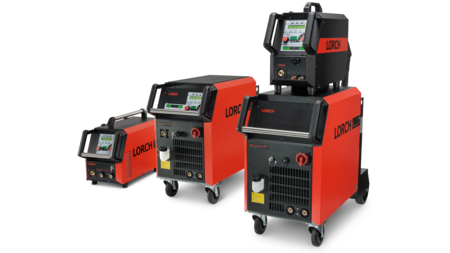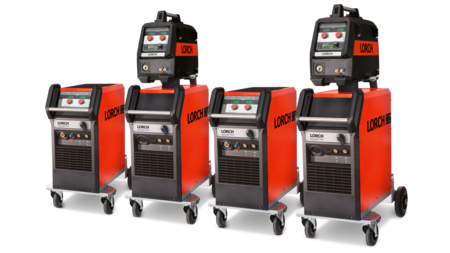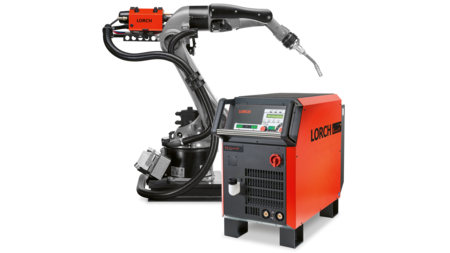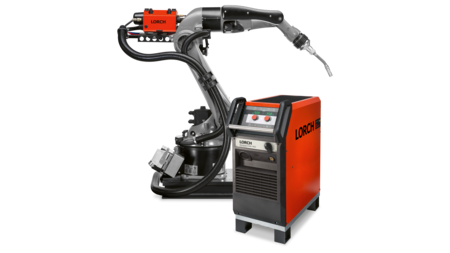Pulse welding – even more efficient now with Lorch SpeedPulse
What is pulse welding anyway?
Pulse welding has considerable advantages compared to conventional MIG-MAG-welding. Pulsing uses the pinch effect. In contrast to the short light arc, this does not discharge the drop in a short circuit. The wire electrode is melted for one or two milliseconds in the pulse and constricted in a specific location. This is done by a current impulse. Just before the current drops again to return to the base current, the constricted drop comes loose to flow into the weld pool. If the arc is long enough, the wire electrode and weld pool will not touch (short circuit), which permits an extremely clean material transition. The drop is kept small. It retains about the same size throughout the performance range. Only the number of pulse intervals changes. That is, the number of drops that are discharged.
Weld more stably and faster with the Lorch SpeedPulse
Combining highly efficient MIG-MAG-welding with a stable, clean pulsed arc results in high-end welding performance at the highest quality, or Lorch SpeedPulse.
Lorch SpeedPulse renders the light arc much more stable. Why is that the case? In contrast to the conventional pulse procedure, Lorch SpeedPulse can discharge more than one drop per pulse into the weld pool. Lorch SpeedPulse is special because it achieves the welding performance and process stability of spray arc welding, combined with all the benefits of pulse welding.
Do you need more detail? Check out the SpeedPulse knowledge page



